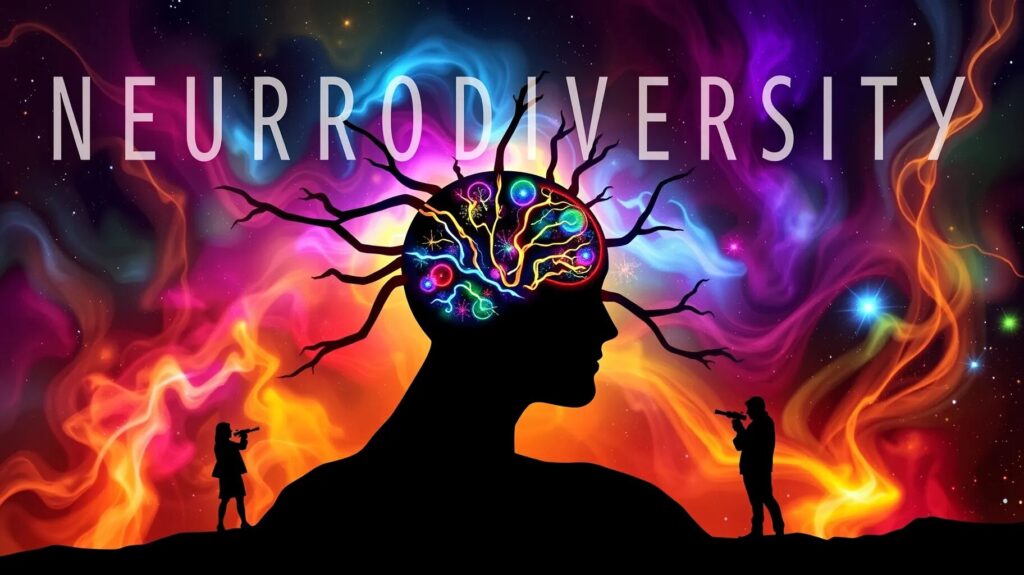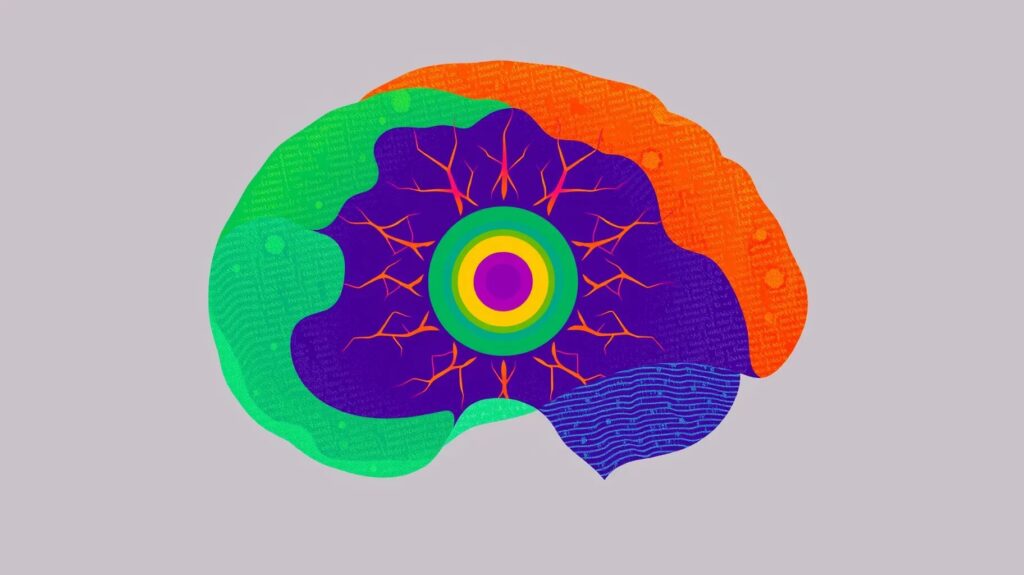
Human Intelligence as a Spectrum: Can AI Understand Neurodiversity?
For decades, society has measured human intelligence through rigid tests, often overlooking the beautiful complexity of neurodiversity. But the way we think, process, and understand the world is far more nuanced than a single IQ score can convey. Neurodiversity—the concept that neurological differences are natural variations of the human brain—offers a broader understanding of intelligence as a spectrum.
But can Artificial Intelligence (AI), built on strict algorithms, truly grasp this diversity? As AI becomes more integrated into education, healthcare, and even hiring processes, the question arises: Can it recognize the varied ways humans think, learn, and innovate? Let’s explore whether AI can understand neurodiversity and what this means for our increasingly tech-driven world.
What is Neurodiversity? A Shift in Thinking
Before diving into how AI might engage with neurodiversity, it’s important to define the term itself. Neurodiversity refers to the concept that cognitive differences like autism, ADHD, dyslexia, and other neurological variations aren’t “deficits” but simply different ways of thinking. This paradigm challenges traditional views of intelligence, asking society to see cognitive diversity as valuable, not as something that needs to be “fixed.”
The neurodiversity movement has gained momentum, advocating for greater understanding, respect, and accommodations for people whose brains work differently. But can AI, which operates on patterns, rules, and data, comprehend the inherently fluid nature of human intelligence?
AI and Standardized Thinking: Where Algorithms Fall Short
AI, by design, is built to recognize and respond to patterns. This is where it shines—using large datasets to predict outcomes and make decisions. However, neurodivergent minds don’t always follow predictable paths. They may process information in nonlinear ways or approach problems with creativity that doesn’t fit within the confines of an algorithm.
For example, AI in educational systems might flag a child with dyslexia as struggling based on reading metrics alone, without considering that the student might excel in visual or spatial reasoning. It’s a classic example of how AI could reinforce a narrow view of intelligence rather than embracing its many forms.
The Rise of Adaptive AI: Can It Learn to Adapt?
Thankfully, not all AI systems are locked into rigid parameters. There’s growing interest in adaptive AI—systems designed to learn and evolve over time. These AI tools can adapt to individual learning styles, providing more personalized educational experiences. In theory, this flexibility could benefit neurodiverse individuals by catering to their unique strengths and challenges.
For example, AI-driven learning platforms can adjust lesson plans based on a student’s performance, offering more visual content for a student with dyslexia or incorporating sensory breaks for those with ADHD. But can adaptive AI truly understand the depth and breadth of neurodiversity, or is it simply mimicking a human understanding?
Bias in AI: How Neurodiverse People are Left Behind

While AI has great potential to support neurodiverse individuals, algorithmic bias presents a significant hurdle. AI systems are only as good as the data they’re trained on—and often, this data comes from neurotypical perspectives. If neurodiverse voices aren’t included in the datasets that AI systems learn from, these systems will inevitably reflect those biases.
For example, hiring algorithms that use AI may inadvertently filter out neurodiverse applicants because their resumes don’t conform to typical standards. An applicant with autism might have an unconventional career path that doesn’t fit the algorithm’s model for success, despite being perfectly suited for the job.
AI in Healthcare: Diagnosing and Supporting Neurodiverse Brains
Interestingly, AI has shown promise in healthcare when it comes to diagnosing neurodiverse conditions like autism or ADHD. By analyzing patterns in behavior, language, and even facial expressions, AI can help doctors diagnose conditions earlier and more accurately.
But diagnosis is just one part of the equation. Can AI go beyond diagnosing and help support neurodiverse individuals in everyday life? AI-powered tools like apps for emotional regulation or sensory management offer glimpses of what’s possible, but these technologies still have a long way to go in terms of understanding the full spectrum of neurodiverse experiences.
Emotional Intelligence: Can AI Understand Neurodiverse Emotions?
One of the most challenging aspects of neurodiversity for AI to grasp is emotional intelligence. Many neurodivergent individuals process emotions differently. For example, someone with autism may have difficulty reading social cues, while someone with ADHD might experience heightened emotional responses. Can AI account for these differences?
While some AI systems are being developed to detect and respond to human emotions, they typically rely on universal patterns of facial expressions or voice tones—indicators that don’t necessarily apply to everyone, especially neurodiverse people. This highlights a significant limitation in AI’s ability to personalize emotional interactions, potentially leading to misunderstandings or unhelpful responses.
Ethical Concerns: AI’s Role in Neurodiverse Inclusion
With AI being used in so many sectors, ethical considerations come to the forefront. How do we ensure that AI doesn’t exacerbate existing inequalities for neurodiverse individuals? The development of AI tools should involve neurodiverse voices in every stage—from design to implementation. Without their input, the risk of creating technologies that marginalize or misinterpret neurodiverse experiences becomes much higher.
For example, if AI systems in workplaces fail to accommodate neurodivergent thinking styles, these tools could unintentionally limit job opportunities for individuals who think differently. It’s crucial that AI developers take an inclusive approach, ensuring that neurodiverse individuals are part of the conversation.
AI Learning Styles: Mimicking Human Brain Plasticity?

One of the most fascinating aspects of the human brain is its plasticity—its ability to adapt and change over time. Neurodivergent brains often demonstrate heightened adaptability, finding unique ways to learn and thrive. Can AI mimic this? Machine learning gives AI systems the ability to “learn” from data, but does this truly reflect the dynamic, ever-changing nature of human intelligence?
While AI can learn to predict patterns and behaviors, it lacks the intuition and creative leaps that define neurodivergent thinking. True intelligence lies not just in pattern recognition but in the ability to innovate, something AI still struggles with.
Collaboration: AI as a Tool, Not a Replacement
Perhaps the key to AI’s role in understanding neurodiversity is recognizing its limits. AI should not be seen as a replacement for human understanding or empathy, but rather as a tool to augment our capabilities. AI can assist teachers, employers, and healthcare providers by offering insights, but it must be combined with human intuition to truly support neurodiverse individuals.
The best outcomes will arise from collaboration—where AI helps to lift the burden of repetitive tasks or data analysis, while humans provide the empathetic, flexible thinking that neurodiverse individuals need to thrive.
Can AI Enhance Neurodiverse Learning Environments?
As AI continues to shape education, there’s growing interest in how it can enhance learning environments for neurodiverse students. Traditional classrooms often cater to one type of learner, leaving those who think or process information differently at a disadvantage. Could AI help bridge that gap?
AI-powered learning platforms are being developed to create personalized learning experiences. These systems can adjust the pace of lessons, offer different formats (text, video, interactive), and provide feedback based on a student’s unique needs. For example, a neurodivergent student who struggles with traditional lectures might benefit from visual aids, while someone with ADHD might engage better with gamified learning.
Still, it’s important to remember that education is about more than just academics. Neurodiverse students often need emotional and social support, and while AI can enhance how lessons are delivered, it can’t replace the human empathy that helps students feel understood and valued. Thus, AI-assisted education must be paired with compassionate teaching practices to create truly inclusive classrooms.
Assistive Technologies: AI’s Role in Day-to-Day Support
Beyond the classroom, assistive technologies are making a significant difference in the lives of neurodiverse individuals. These tools, many of which are powered by AI, are designed to help people navigate everyday tasks and manage challenges related to their neurodivergent conditions.
Take, for instance, apps designed to help those with ADHD manage time, set reminders, and break tasks into manageable steps. For people on the autism spectrum, AI tools like speech-to-text software or social skills training apps can offer practical support in areas where they may need extra help.
Voice-controlled assistants like Alexa or Google Home have also become useful in this regard, helping users set up routines, control environments, and simplify daily activities. These technologies show how AI can play a positive role in neurodivergent lives, offering practical solutions for specific challenges.
AI in the Workplace: Supporting Neurodiverse Employees
The workplace is another area where neurodiverse individuals face unique challenges—and opportunities. While many organizations are embracing diversity, the hiring process itself is often filled with biases that work against neurodivergent applicants. AI is now being introduced into hiring platforms to streamline processes, but it can also perpetuate those biases if not carefully monitored.
However, AI can also support neurodivergent employees once they’re on the job. For example, AI-powered tools can help with task management, organization, and communication, especially in jobs that require constant multitasking or strict deadlines. Adaptive systems can even adjust workflows to match an employee’s cognitive strengths, making work environments more accessible.
Moreover, AI-driven analytics can give employers insights into how they can best support neurodiverse employees, offering suggestions on accommodations or tailored career paths. When used correctly, AI can foster a more inclusive work culture, helping neurodivergent workers thrive without forcing them to conform to traditional working styles.
The Limitations of AI in Understanding Human Complexity

Despite the potential of AI, it’s essential to recognize that it will always have limits when it comes to understanding the depth of human experience—especially in the context of neurodiversity. Human intelligence isn’t just about processing information; it involves creativity, intuition, empathy, and the ability to navigate ambiguity. AI can mimic patterns and learn from data, but can it ever fully grasp the intricacies of how a neurodivergent mind works?
In fact, AI’s strength—its ability to process massive amounts of data—might be its greatest weakness when it comes to understanding neurodiversity. Neurodiverse individuals often excel in areas that don’t fit neatly into a dataset: out-of-the-box thinking, unconventional problem-solving, and emotional nuance. These are the kinds of skills that are difficult for AI to quantify, yet they are crucial to human intelligence.
The Future of AI and Neurodiversity: A Collaborative Approach
Looking ahead, the relationship between AI and neurodiversity will likely be one of collaboration. AI won’t replace human understanding, but it can serve as a powerful tool for enhancing the lives of neurodiverse individuals. By integrating adaptive technologies with neurodiverse perspectives, AI can help create more inclusive systems in education, healthcare, and the workplace.
However, to realize this potential, developers and technologists must engage with neurodiverse communities throughout the design process. The risk of leaving neurodiverse voices out of AI development is too great—and could lead to systems that exclude or misinterpret those who think differently. Ultimately, the goal should be to ensure that AI serves as a supportive ally for neurodiverse individuals, helping them navigate a world that often wasn’t built with their needs in mind.
Can AI Facilitate a Deeper Understanding of Neurodiversity?
One of the most intriguing possibilities is whether AI can actively teach society about neurodiversity. While AI may not fully understand the complexities of the human brain, it can play a role in raising awareness and spreading knowledge. Imagine AI-powered tools that simulate the experiences of neurodivergent individuals, giving neurotypical people a glimpse into what it feels like to navigate the world with a different cognitive framework.
Virtual reality (VR) systems, for instance, can already immerse users in a variety of sensory experiences. By combining AI with VR, developers could create simulations that mimic how someone with autism might experience sensory overload or how a person with dyslexia processes text. These immersive tools would not only increase empathy but also deepen understanding, helping to break down stereotypes and misconceptions about neurodiverse individuals.
Additionally, AI-driven educational programs could offer neurodiversity training in workplaces, schools, and public spaces, helping more people understand the value of different ways of thinking. If society at large becomes more neurodiversity-aware, this could have a cascading effect on how institutions, organizations, and individuals accommodate and embrace cognitive diversity.
AI and the Ethics of Personalization: How Far Should We Go?
As AI systems become increasingly personalized, ethical questions arise about how much customization is appropriate, especially in contexts involving neurodiverse individuals. For example, should AI tailor itself to the specific needs of neurodiverse students or workers to such an extent that it prevents them from facing challenges or building resilience? There’s a delicate balance between providing necessary support and shielding people from valuable growth experiences.
Over-personalization can lead to an over-reliance on technology, potentially isolating individuals rather than helping them integrate into broader society. The key lies in designing AI systems that support empowerment rather than dependency, giving neurodiverse people the tools to navigate the world on their terms, but also encouraging them to engage with challenges when they’re ready.
There’s also the matter of data privacy. Personalized AI systems, by nature, require large amounts of data to function effectively. In the case of neurodiverse individuals, that might include sensitive information about their cognitive processes, medical history, or emotional patterns. It’s critical that developers create robust privacy protections to ensure this information is not exploited or misused.
AI as a Bridge Between Neurodiverse and Neurotypical Communities
As AI systems evolve, they could also serve as communication bridges between neurodiverse and neurotypical individuals. Neurodiverse people sometimes face challenges in social communication, whether it’s understanding social cues, expressing emotions, or managing conversations. AI could help translate these interactions, offering real-time insights or prompts that assist both parties in navigating social situations more effectively.
For example, an AI-driven app could offer conversation cues for someone with autism, providing suggestions about appropriate responses or body language during social interactions. Likewise, an AI assistant for neurotypical individuals could offer reminders to be patient, to rephrase questions, or to avoid sensory triggers during conversations with a neurodiverse individual. Such tools could foster greater empathy and understanding between different communities.
However, it’s important that AI is not seen as a crutch for communication but rather as a tool that enhances natural human connection. The goal should always be to facilitate authentic relationships where neurodiverse and neurotypical individuals understand and respect each other’s unique ways of thinking.
The Future of AI and Neurodiversity: Moving Toward Inclusive Design
If AI is to truly serve neurodiverse populations, the next step is to ensure that inclusive design becomes a core principle in its development. Inclusive design means creating technologies that account for the widest range of human diversity, including cognitive differences. This goes beyond making minor adjustments or accommodations—it involves a fundamental shift in how products and systems are conceived from the ground up.
For instance, voice-activated technologies could be designed to recognize a broader range of speech patterns, taking into account how language processing disorders might affect someone’s voice commands. Or AI systems that assist in decision-making could allow for multiple paths to the same outcome, catering to different cognitive styles.
At its best, AI could create a future where neurodiverse individuals are not only supported but celebrated for their unique ways of thinking. However, this future depends on the involvement of neurodivergent voices in the design process. Developers must actively seek input from neurodiverse communities, incorporating their feedback and ensuring their needs are prioritized.
A Collaborative Vision for AI and Neurodiversity
Ultimately, the intersection of AI and neurodiversity is an opportunity for collaboration. AI has the potential to make a profound difference in the lives of neurodiverse individuals, but only if it is designed thoughtfully, with respect and understanding of the unique challenges and strengths that come with cognitive diversity.
By embracing adaptive technologies, personalized support systems, and inclusive design, we can create a world where neurodiverse people are not only included but empowered to succeed on their own terms. Artificial intelligence might not fully “understand” neurodiversity in the way humans do, but it can still play a vital role in amplifying the voices and experiences of those who think differently.
Together, humans and AI can work to build a future where intelligence isn’t confined to narrow definitions—and where diversity, in all its forms, is seen as the foundation for innovation and progress.
Resources
Books and Articles
- “NeuroTribes: The Legacy of Autism and the Future of Neurodiversity” by Steve Silberman
- A deep dive into the history of autism and the neurodiversity movement, exploring how societal perspectives on cognitive differences have evolved.
- “The Power of Neurodiversity: Unleashing the Advantages of Your Differently Wired Brain” by Thomas Armstrong
- This book highlights the strengths of neurodiverse individuals and offers insights on how to embrace these differences in various life aspects.
- “Artificial Intelligence in Education: Promises and Implications for Teaching and Learning” by Wayne Holmes, Maya Bialik, and Charles Fadel
- This resource explores how AI is impacting education, including the potential benefits and challenges for neurodiverse students.
- “The Promise and Perils of AI in Special Education” – EdTech Magazine
- An article discussing how AI is shaping special education, with a focus on helping neurodiverse students in classrooms.
Online Platforms and Tools
- CogniFit – (https://www.cognifit.com)
- A platform offering cognitive training programs, including tools for neurodiverse individuals to improve memory, attention, and reasoning skills.
- Learning Ally – (https://www.learningally.org)
- A platform designed for people with dyslexia and learning differences, offering audiobooks and reading tools to support education.
- Otter.ai – (https://otter.ai)
- A real-time transcription tool that can help neurodiverse individuals, particularly those with auditory processing or communication difficulties.
- Neurodiversity Hub – (https://www.neurodiversityhub.org)
- An online resource providing educational tools, employment resources, and information for neurodiverse individuals, educators, and employers.
Research and Studies
- “Artificial Intelligence and Neurodiversity: Identifying Biases in AI Models” – IEEE Spectrum
- A research article discussing the biases present in AI systems and the impact on neurodiverse individuals, with suggestions on mitigating these issues.
- “AI in Autism: Research and Challenges” – Journal of Autism and Developmental Disorders
- A study examining the use of AI in diagnosing and supporting people on the autism spectrum, as well as potential ethical concerns.
- “AI, Machine Learning, and Neurodiversity in Education” – Center for Neurodiversity
- A report exploring how AI can be used to create adaptive learning environments for neurodiverse students, including personalized learning paths and support tools.
Organizations and Advocacy
- Autism Self-Advocacy Network (ASAN) – (https://autisticadvocacy.org)
- An organization dedicated to promoting the rights of neurodiverse individuals, providing resources for self-advocacy, and fostering inclusive communities.
- The Neurodiversity Foundation – (https://neurodiversityfoundation.org)
- Focuses on promoting awareness of neurodiversity in society, and works with various organizations to create more inclusive environments through technology and policy.
- The Center for Neurodiversity and Workplace Inclusion – (https://www.centerforneurodiversity.org)
- Provides resources for businesses and employers to better understand neurodiversity and create inclusive hiring practices using AI and other tools.